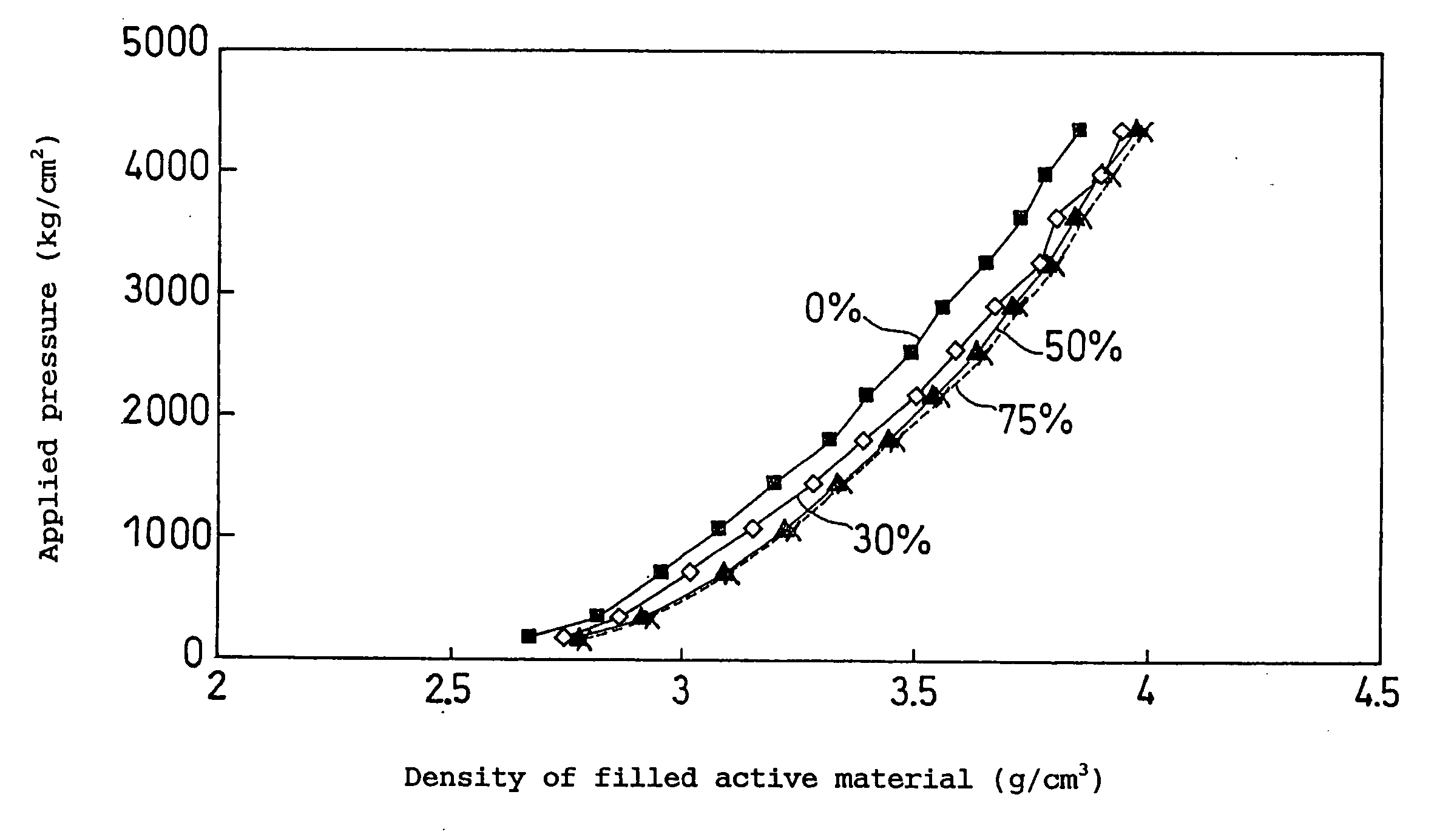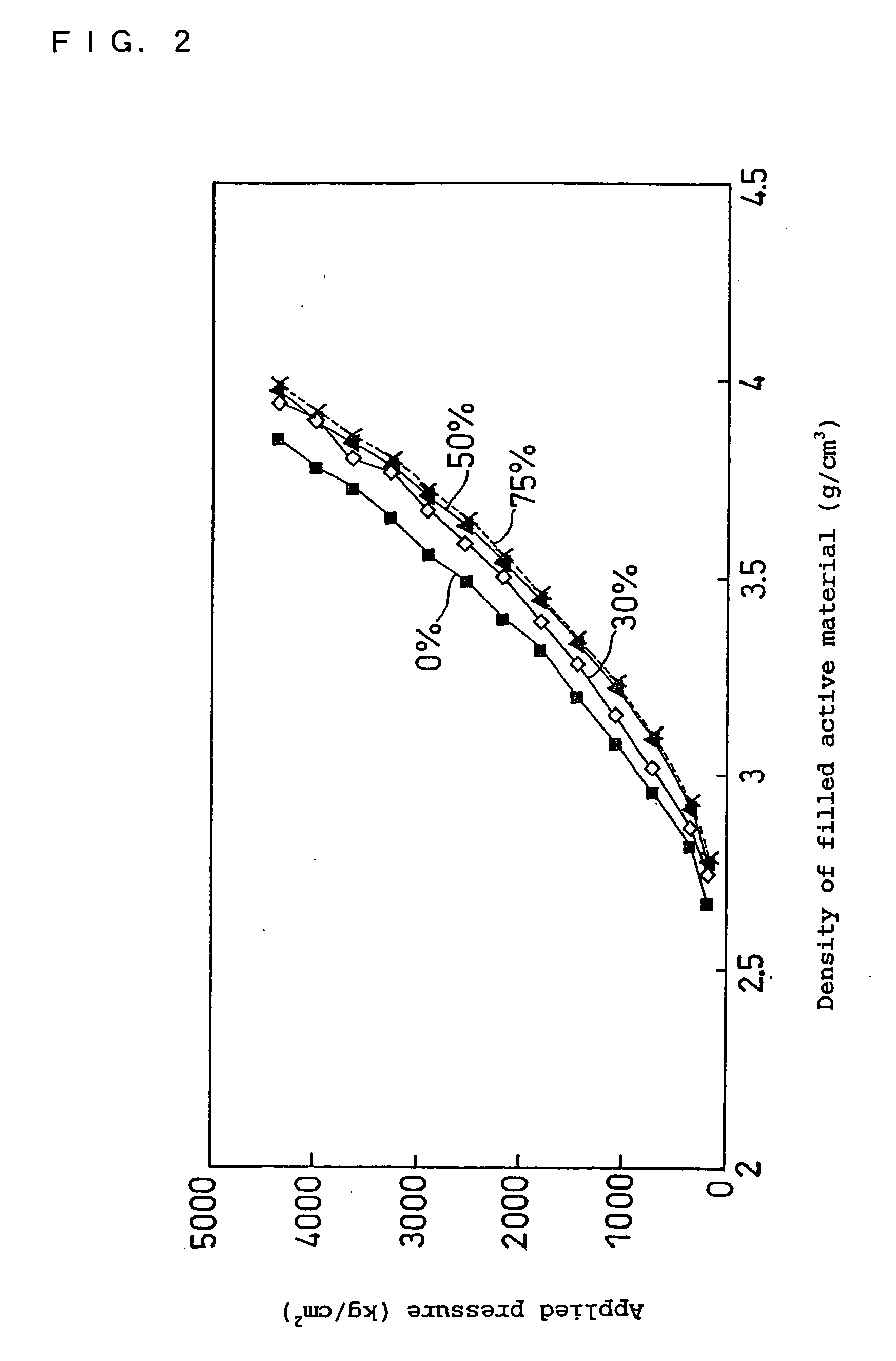Non-aqueous electrolyte secondary battery
a secondary battery, non-aqueous electrolyte technology, applied in the manufacture of final products, cell components, electrochemical generators, etc., can solve the problems of excessive amount of rubber particles in poor flexibility of the active material of the positive electrode, and separation of the current collector from the material mixture layer, so as to prevent the positive electrode material mixture layer from curing, improve the flexibility and improve the adhesion of the positive electrode material
- Summary
- Abstract
- Description
- Claims
- Application Information
AI Technical Summary
Benefits of technology
Problems solved by technology
Method used
Image
Examples
example 1
(i) Production of Positive Electrode
[0062] As the starting material of the positive electrode active material, solid solution nickel hydroxide containing a certain amounts of cobalt and aluminum was used. More specifically, solid solution nickel hydroxide having an average particle size of 7 μm (nickel hydroxide A) and lithium hydroxide were mixed, followed by baking at 950° C. The resulting product was slowly cooled down to 100° C. for 12 hours. Thus, lithium nickel composite oxide secondary particles (composition: LiNi0.8Co0.15Al0.05O2) were obtained. This was designated as particulate substance A. Meanwhile, a particulate substance B was prepared in the same manner as the particulate substance A was produced except that the solid solution nickel hydroxide having an average particle size of 0.3 μm (nickel hydroxide B) was used.
[0063] The weight ratio of the particulate substances A and B was A:B=70:30. The particulate substance A had an average particle size of 20 μm. The parti...
examples 2 to 4
[0073] Batteries of EXAMPLEs 2, 3 and 4 were produced in the same manner as in EXAMPLE 1 except that the average particle size of the particulate substance B was changed to 3 μm, 5 μm and 10 μm, respectively, by changing the average particle size of the solid solution nickel hydroxide B to 1 μm, 1.5 μm and 3 μm, respectively.
examples 5 to 7
[0074] Batteries of EXAMPLEs 5, 6 and 7 were produced in the same manner as in EXAMPLE 1 except that the average particle size of the particulate substance A was changed to 10 μm by changing the average particle size of the solid solution nickel hydroxide A to 3 μm, and that the average particle size of the particulate substance B was changed to 3 μm, 5 μm and 8 μm, respectively, by changing the average particle size of the solid solution nickel hydroxide B to 1 μm, 1.5 μm and 2.5 μm, respectively.
PUM
| Property | Measurement | Unit |
|---|---|---|
| particle size | aaaaa | aaaaa |
| particle size | aaaaa | aaaaa |
| DA | aaaaa | aaaaa |
Abstract
Description
Claims
Application Information
 Login to View More
Login to View More - R&D
- Intellectual Property
- Life Sciences
- Materials
- Tech Scout
- Unparalleled Data Quality
- Higher Quality Content
- 60% Fewer Hallucinations
Browse by: Latest US Patents, China's latest patents, Technical Efficacy Thesaurus, Application Domain, Technology Topic, Popular Technical Reports.
© 2025 PatSnap. All rights reserved.Legal|Privacy policy|Modern Slavery Act Transparency Statement|Sitemap|About US| Contact US: help@patsnap.com



